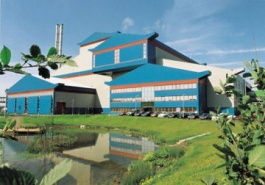 Surprisingly to some, electricity generators can be among the least energy conscious when it comes to running their own plants. This is not so for the renewable energy producer SITA UK Limited, whose Teesside facility has recently installed Schneider Electric motor control equipment that is saving over £90,000 of electricity a year.
Surprisingly to some, electricity generators can be among the least energy conscious when it comes to running their own plants. This is not so for the renewable energy producer SITA UK Limited, whose Teesside facility has recently installed Schneider Electric motor control equipment that is saving over £90,000 of electricity a year.
SITA Tees Valley is an energy from waste (EfW) site that uses 250,000 tonnes of household refuse a year to generate 20MW of electricity that is exported to the National Grid. About 98% of the waste input is recovered or recycled in the form of energy, metals and ash for use in aggregates.
The plant has two streams that each process 15 tonnes of waste per hour. The refuse, which is delivered directly from the local authority, is incinerated in furnaces that heat steam to drive a generating turbine. This process is closely controlled and emissions are minimal.
It was SITA Tees Valley Management’s concern with environmental matters that lead to the installation of six Altivar motor speed controllers from Telemecanique, a brand of Schneider Electric. Schneider Electric manufactures a broad range of electrical equipment used by the waste industry, through its brands, which include: Merlin Gerin, Square D and Telemecanique. Indeed, Merlin Gerin switchgear already reliably controls the SITA Tees Valley plant’s own power requirements.
During a routine production project being undertaken by one of Schneider Electric’s specialist waste management solutions partners, Richard Horsman of PPT Drive Systems Limited, identified that the large centrifugal fans used in the power generation process were running continuously at full duty with air flow being controlled by mechanical vane dampers. Graham Ingleson, SITA Tees Valley’s General Manager agreed to PPT Drive Systems completing a free energy audit to make recommendations for energy savings. Having studied the existing fan configurations and duty cycles, PPT developed a model, using six Telemecanique AC sensorless flux vector inverters from 30kW to 110kW. The model showed a possible reduction in energy consumption from 320kW to just 50kW per hour.
The energy argument was a compelling one, but there was also the consideration of the installation and commissioning of the retrofit drives and the need to maintain the operator interfaces employed throughout the plant. PPT Drive Systems was able to complete the installation within three days, which comfortably fitted the timescale for one of the plant’s annual week-long shut downs. Moreover, none of the operator panels, switches or SCADA systems was affected in any way from the retrofit. In effect, the new drives were invisible to the plant operators.
As part of the service, PPT also provided SITA with drive set up records, plots of the fan curves and “as installed” energy saving calculations. A glance at the Telemecanique drives’ operator panels, that include a kWh log among their features, confirms the installation is in practice meeting the theoretical calculations.
Graham Ingleson commented: “By optimising the fan speeds and being now able to adjust those speeds according to the cycle demand, we have saved enormous amounts of energy”. But the story doesn’t end there, as Mr Ingleson continued to explain. “SITA Tees Valley’s philosophy is to have minimal impact on the environment. By replacing the old mechanical dampers on the oil burner fans, we provided finite control of the airflow. This has resulted in greater control of the burn mix and enabled the facility to minimise emissions from the oil burner at start-up and shutdown of the plant”.
Although the SITA Tees Valley site is 50% exempted from the effects of the Climate Change Levy, the installation still qualifies for the Government’s Enhanced Capital Allowance (ECA). This means that the cost of the drives and their installation can be entirely offset against income tax in the first year of ownership. Normally, plant capital allowances are claimed at only 25% per annum and without the ECA, it takes over 10 years to fully recover the costs of the equipment. The ECA can be claimed on any new equipment that meets the qualifying technology within the defined energy saving criteria. The Schneider Electric, Telemecanique variable speed drives, as used by SITA, are approved for the ECA when used in continuous duty applications such as fans, pumps and compressors.
Attractive and beneficial though the ECA is, the bottom line on the SITA Tees Valley installation is that payback on the drives installation was less than six months, even before any capital allowances.
